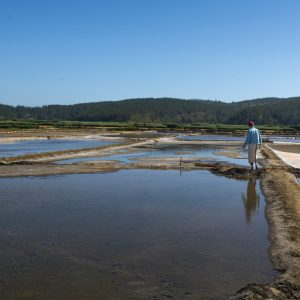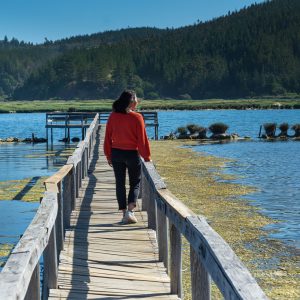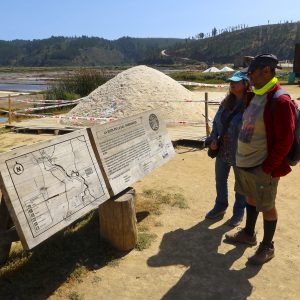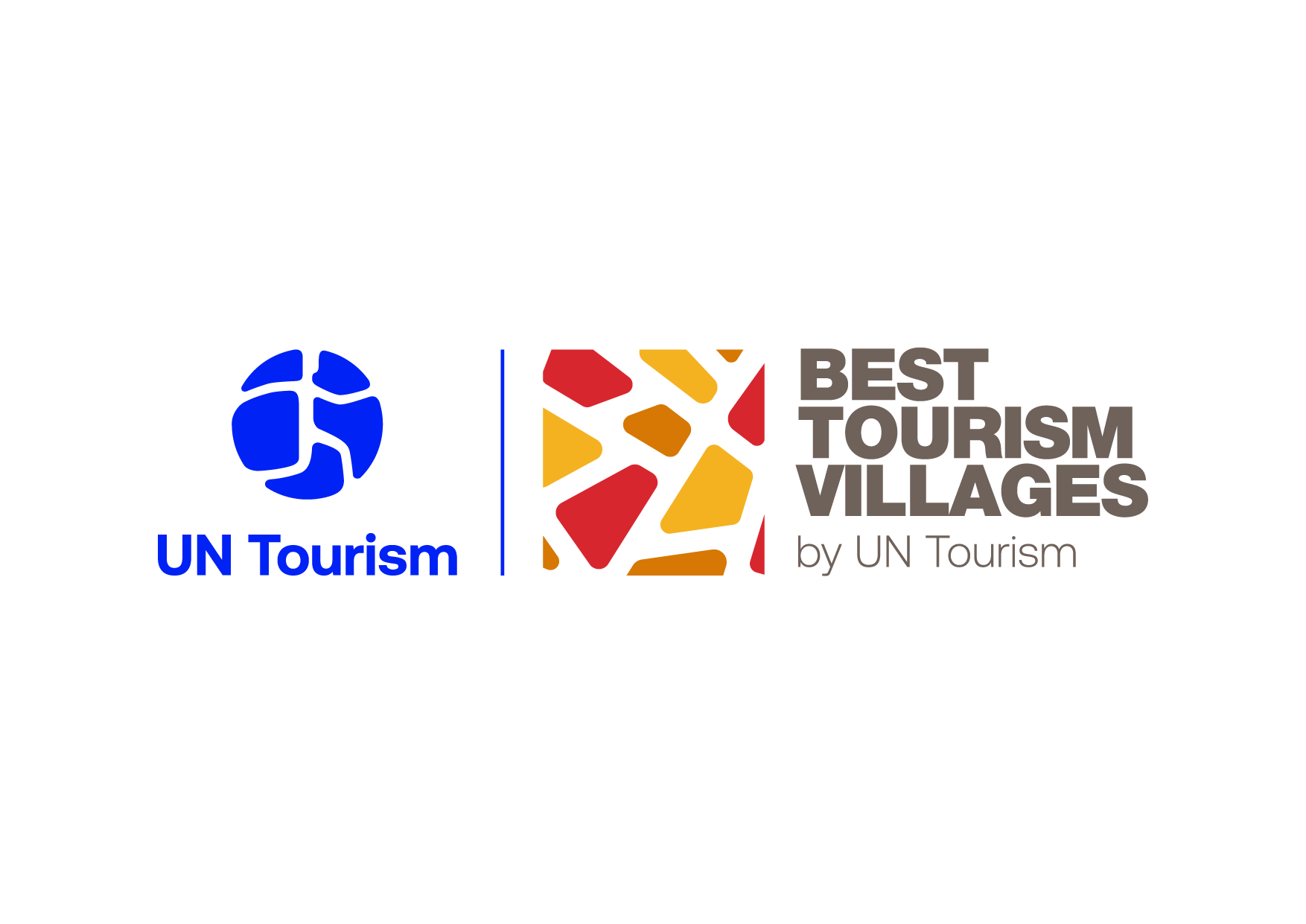Nestled in the heart of Chile’s O’Higgins Region, Barrancas beckons adventurers to embark on an enchanting journey into its vibrant cultural heritage. This picturesque locale is renowned for its ancient salt flats, where sea salt is meticulously harvested using age-old techniques dating back to pre-Hispanic times. The coastal salt produced here boasts a prestigious Designation of Origin certification, a testament to its exceptional quality and distinct production methods.
In 2011, the Chilean government honored a dedicated group of artisans united under the Barrancas Salt Workers’ Cooperative with the title of “Living Human Treasures.” These remarkable individuals have not only preserved but also nurtured a sustainable salt cultivation model, harmoniously blending human craftsmanship with the gifts of nature.
Barrancas is an integral part of the renowned “Salt Route,” a captivating experience championed by local tour operators. Here, visitors have the opportunity to delve into the salt extraction process, acquire exquisite salt products, and discover unique local crafts, all while interacting with the warm-hearted salt workers. The Municipality of Barrancas plays an active role in promoting this extraordinary cultural heritage, organizing exciting trips and annual celebrations, including the lively Salt Festival and Salt Worker’s Day, for visitors to fully immerse themselves in the local traditions.
As if that weren’t enough, Barrancas offers more natural wonders to explore. Cáhuil Lagoon Wetland, a mixed-water wetland, originating from the mouth of the Nilahue estuary, merges with the sea to the west through an opening towards the Pacific Ocean. At Cáhuil Lagoon Wetland, visitors can enjoy activities such as canoeing, swimming, sports fishing, and the observation of flora and fauna, especially birds. Towards the shore there are small beaches with calm waters, adding to the landscape’s appeal and one can also participate in the experiences related to salt production.
HIGHLIGHTS
-

When salt extraction meets tourism: a boost to the local economy
From 2014 to 2020, a long-term intervention was carried out, funded by the O’Higgins Regional Government and developed by the Universidad Central, to enhance the tourism value of the salt worker’s cultural heritage. Competencies were strengthened, not only among salt workers and their families but also among accommodations, restaurants, tour operators, tour guides, and artisans. The understanding was that sustainable businesses needed to be fostered to integrate the offering of salt-related tourism products. The intervention focused on improving the technical skills of service providers, allowing them to meet the quality standards suitable for the tourism market, generating specific actions to link the salt-related tourism product offerings with the formal marketing chain, improving the environmental conditions regarding equipment and tourism infrastructure in the study area, and promoting the tourism offer and salt heritage within the tourism industry.
Before the intervention, there was a significant decline in salt extraction activity because young members of salt-producing families preferred working in other jobs outside the area. This shift was due to the strenuous and seasonal nature of the salinero profession. However, with the intervention carried out by the Universidad Central, a new form of work related to the salt flats was introduced through tourism. This created an opportunity for young people in the region to stay in their territory without having to migrate to the city for employment. It also contributed to the economies of families involved in salt production. The tourism activity enabled not only young people but also older adults and women to benefit from this economic opportunity.
-

Women solidarity
In 2017 and 2018, with funding from the Regional Government, the project “Strengthening Women’s Tourism Entrepreneurship” was carried out. Based on the concept of Solidarity Tourism Among Women, the objective of this initiative is for women entrepreneurs themselves to consume the products and services created by their fellow women entrepreneurs. Additionally, they share and disseminate information with potential customers to promote the marketing and sale of local products made by women and accommodation and tourism services provided by women.
-

The Cáhuil wetland: an effective management plan
In 2020, a local committee comprising both public and private stakeholders was established to execute a management plan for the development of tourism activities in the Cáhuil wetland. This plan aimed to identify the adverse impacts of tourism, establish tourism zones, and determine carrying capacity (the maximum population that a given area can sustain) using the ROVAP methodology. Based on these findings, a tourism management model was proposed, offering alternative circuits to alleviate congestion in the surrounding areas while emphasizing nature and heritage tourism.
To date, the management plan has implemented several activities for the sustainable management of the Cáhuil wetland. This includes the delimitation of the wetland and the identification of priority areas for restoration, the collection of algal information for management in scenarios of excessive blooming, the establishment of a wetland monitoring program, and protective measures and management strategies for the wetland.

